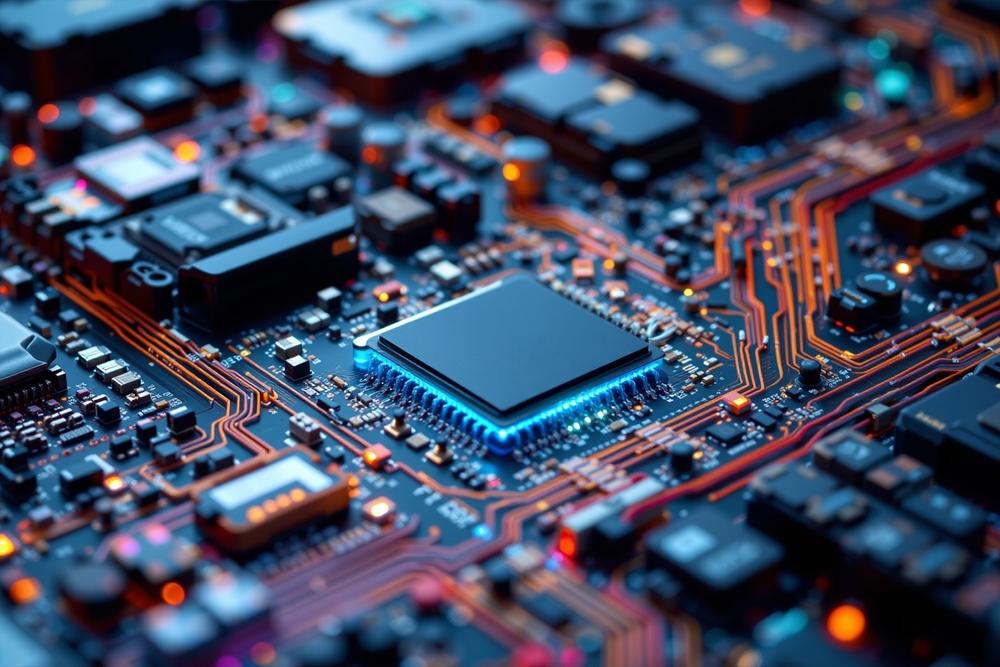Semiconductors in the U.S.: Industry Overview, Growth Drivers, and Key Players
Explore the U.S. semiconductor industry. For more information, use a quick search below.
The semiconductor industry in the United States is a vital cornerstone of modern technology, powering everything from smartphones and computers to electric vehicles, defense systems, and artificial intelligence. As global demand for chips continues to rise, the U.S. is actively investing in domestic semiconductor manufacturing and research to reduce dependency on foreign supply chains and reinforce its leadership in innovation.
This article explores the current state of the U.S. semiconductor industry, the types of semiconductors produced, major players, key challenges, and what’s driving growth in this high-stakes sector.
U.S. Semiconductor Industry Overview
The U.S. semiconductor sector represents nearly half of the global market by revenue, with American companies like Intel, NVIDIA, and Qualcomm leading in design, innovation, and research. However, only a small fraction of chip manufacturing occurs domestically, creating a gap between design dominance and production capabilities.

To address this, the U.S. government has launched multiple initiatives, most notably the CHIPS and Science Act, which allocates over $52 billion toward boosting semiconductor production, R&D, and workforce development on American soil.
Types of Semiconductors Produced
Semiconductors vary widely in function and design, with U.S. companies involved in several key categories:
1. Logic Chips
These chips serve as the “brains” of devices, processing data and instructions in smartphones, laptops, and servers.
Common Users: Apple, Microsoft, Google
Main Producers: Intel, AMD, GlobalFoundries
2. Memory Chips
Memory semiconductors store data and instructions for access during processing. The U.S. trails in this area compared to South Korea and Japan but is investing in recovery.
Common Types: DRAM, NAND flash
Key Players: Micron Technology (U.S.), Western Digital
3. Analog Chips
Used to convert real-world signals like sound, temperature, and pressure into digital signals. Widely used in sensors, automotive, and medical equipment.
Key U.S. Producers: Texas Instruments, Analog Devices
4. Power Semiconductors
Essential in managing and converting electrical energy in devices like EVs, solar panels, and industrial equipment.
Emerging Materials: Silicon carbide (SiC), gallium nitride (GaN)
Key U.S. Players: Wolfspeed, Onsemi
5. Specialty and Custom Chips (ASICs & FPGAs)
Tailored for specific applications such as AI, cryptocurrency mining, or defense technology.
Leaders: NVIDIA, AMD, Xilinx (acquired by AMD), Intel
Major U.S. Semiconductor Companies
Intel Corporation
Headquartered in California, Intel is one of the oldest and most influential chipmakers in the world. While historically dominant in CPU production, it is now expanding into foundry services to compete with global manufacturing giants.
NVIDIA
Initially known for graphics processing units (GPUs), NVIDIA has become a key force in AI and data center chips. Its powerful chips fuel machine learning, gaming, and autonomous vehicles.
AMD (Advanced Micro Devices)
A top competitor to Intel, AMD produces CPUs and GPUs that are widely used in gaming, cloud computing, and data centers. Its recent acquisitions have expanded its footprint into custom chips and embedded systems.
Qualcomm
A global leader in wireless communication chips, Qualcomm powers a significant portion of the smartphone industry, including 5G connectivity technologies.
Micron Technology
Based in Idaho, Micron is one of the few U.S. companies manufacturing memory chips (DRAM and NAND), playing a strategic role in the domestic semiconductor supply chain.
Texas Instruments (TI)
TI is a dominant force in analog and embedded chips, supplying components used in everything from calculators to space equipment.
GlobalFoundries
A U.S.-headquartered foundry with global operations, GlobalFoundries manufactures semiconductors for clients across automotive, IoT, and telecom industries.
What’s Driving Growth in the U.S. Semiconductor Industry
1. Government Investment
The CHIPS and Science Act is expected to jumpstart domestic manufacturing, support the construction of advanced fabs, and increase public-private R&D collaboration.
2. Supply Chain Security
Global events—such as the COVID-19 pandemic and geopolitical tensions—have exposed vulnerabilities in relying on overseas manufacturing. Domestic production ensures national security and economic stability.
3. Demand for Emerging Technologies
AI, quantum computing, 5G, electric vehicles, and IoT are fueling exponential demand for more advanced, energy-efficient chips.
4. Talent and Innovation Ecosystem
The U.S. remains a hub for semiconductor research and development, thanks to its world-class universities, tech giants, and startup culture.
5. Strategic Partnerships
U.S. firms are partnering with global companies like TSMC and Samsung to establish advanced fabs within U.S. borders, boosting capacity while retaining international collaboration.
Challenges Facing the Industry
While growth potential is strong, several issues remain:
- Skilled labor shortage: The industry needs engineers, technicians, and researchers to meet rising demand.
- High capital costs: Building a single advanced fab can cost $10–$20 billion and take several years to complete.
- Global competition: Asian countries still lead in high-volume chip production, particularly Taiwan and South Korea.
- Intellectual property risks: With chip designs often outsourced, securing intellectual property remains a concern.
The U.S. semiconductor industry stands at a pivotal moment, balancing its strengths in design and innovation with a critical need to restore domestic manufacturing. As global demand for chips soars, U.S. policy and investment are aligning to reclaim leadership in this strategically vital field. From AI to energy to defense, semiconductors are at the heart of the next industrial era—and the U.S. is gearing up to lead it.
Whether you're an investor, technologist, or industry observer, it’s clear: the future of semiconductors in the U.S. is not only essential—it’s inevitable.











